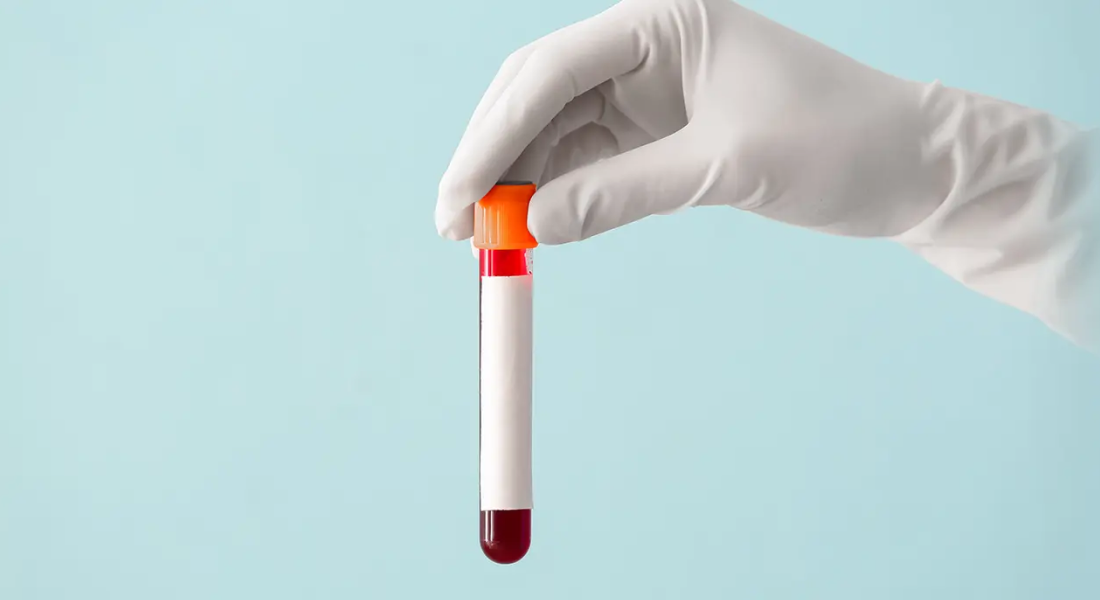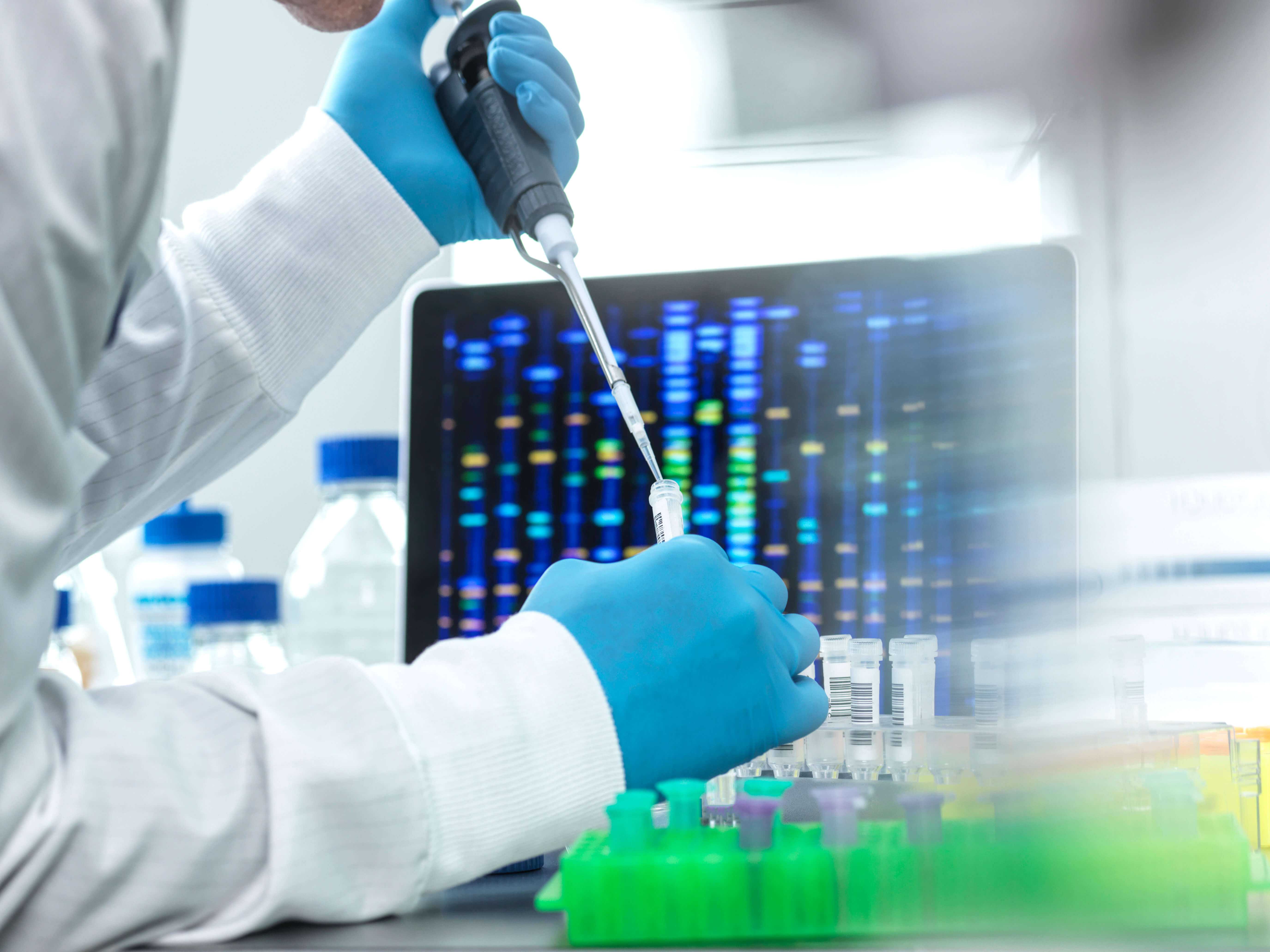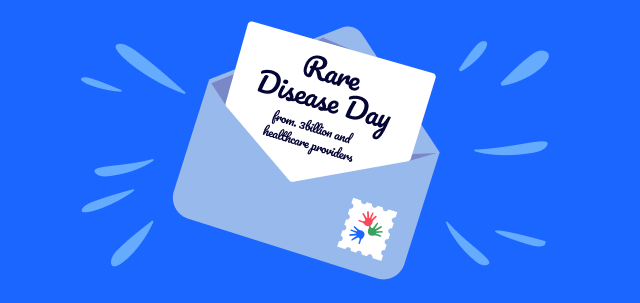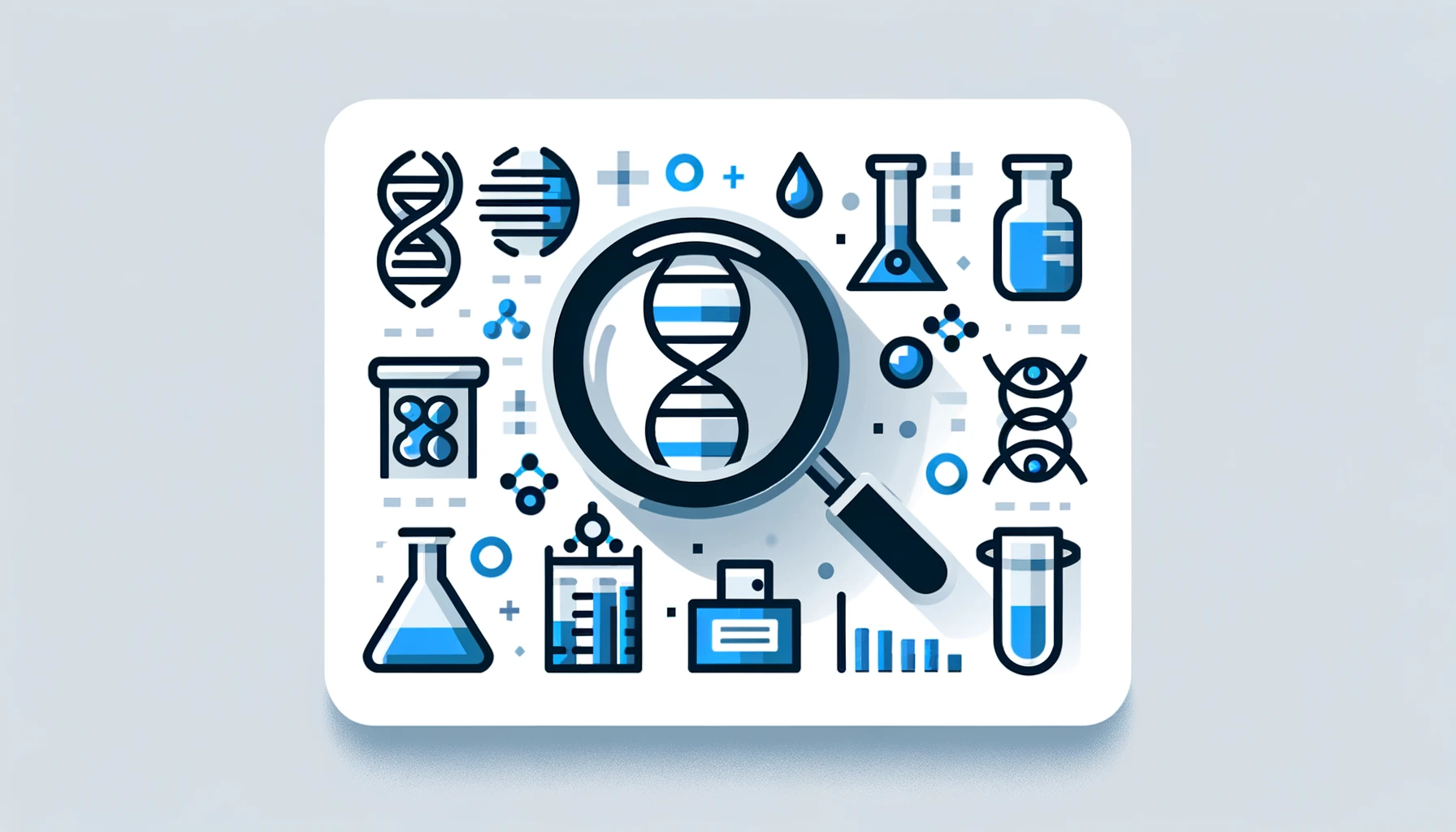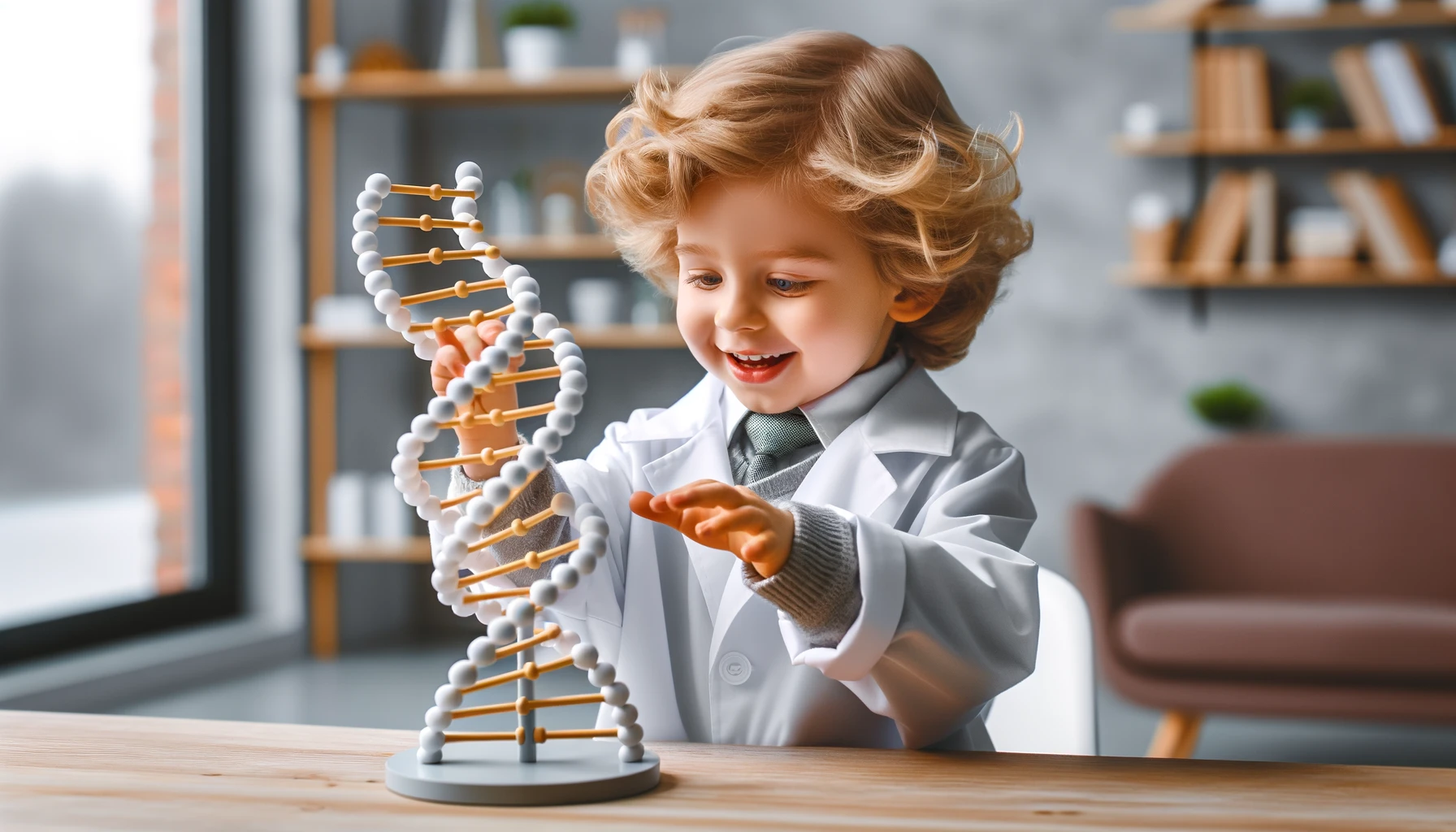DNA is contained in and can be extracted from blood, saliva, semen, skin cells, tissues, organs, bones, hair, mucus, perspiration, and fingernails among others1. DNA is the essential biological sample that is required for Next Generation Sequencing (NGS). However, when it comes to NGS, the aforementioned sources of DNA are not all used. Two common forms of biological samples for DNA extraction are blood and buccal collection. We are going to take a look at these two types of biological samples to see how they compare in three general categories that will provide insight into what type of sample is best.
Collection method
Let’s first take a look at how each type of sample can be collected. The primary difference in the collection method is that blood drawing is an invasive procedure, while buccal swabs are non-invasive procedures.
Blood drawing
Blood drawing is an invasive procedure that requires special training, and may even require a minimum level of certification to be able to legally draw blood, as there are certain procedures that should be followed. The World Health Organization provides a detailed guide of blood drawing procedures detailing the best practices that include procedure, sanitation, and required equipment2. If the best practices are followed, blood drawing is best done in a controlled environment, like a hospital, clinic, or temporary blood drawing stations. Issues in blood drawing can arise if the patient is needle averse or has small or fragile veins preventing blood drawing.
Buccal swabs
Buccal swabs are another form of collecting DNA that is both non-invasive and inexpensive compared to blood drawing3. The collection method is simple, requiring little equipment that can be used for collecting samples when medical equipment is lacking3, 4. Even though no special certification is needed, proper collection procedures are needed. These procedures are often ignored resulting in not being able to extract useful DNA. Therefore, it is important to use proper technique.
- Patient should not eat or drink anything at least 1 hour prior
- Softly massage the cheeks
- Rub the inside of the cheek at least 20 times per cheek, per swab
- Make sure the cotton swab does not come in contact with anything else
- Place the cotton swab immediately in the tube containing the buffer solution
- Securely fasten the tube and gently shake the tube containing the 2 swabs
- Store at room temperature
Both
Once the sample is collected through either method, proper labeling, storage, and shipping must be carried out. One must also not forget that a patient consent form is needed for either method of collection, as 3billion’s test is a medical diagnosis test. This is a critical step in the sample collection process that must not be overlooked.
Storage and shipping
Once the sample is gathered, proper storage and shipment preparation must be considered to assure that the samples arrive safely to its destination for DNA extraction. Let’s take a look at these considerations for both types of samples.
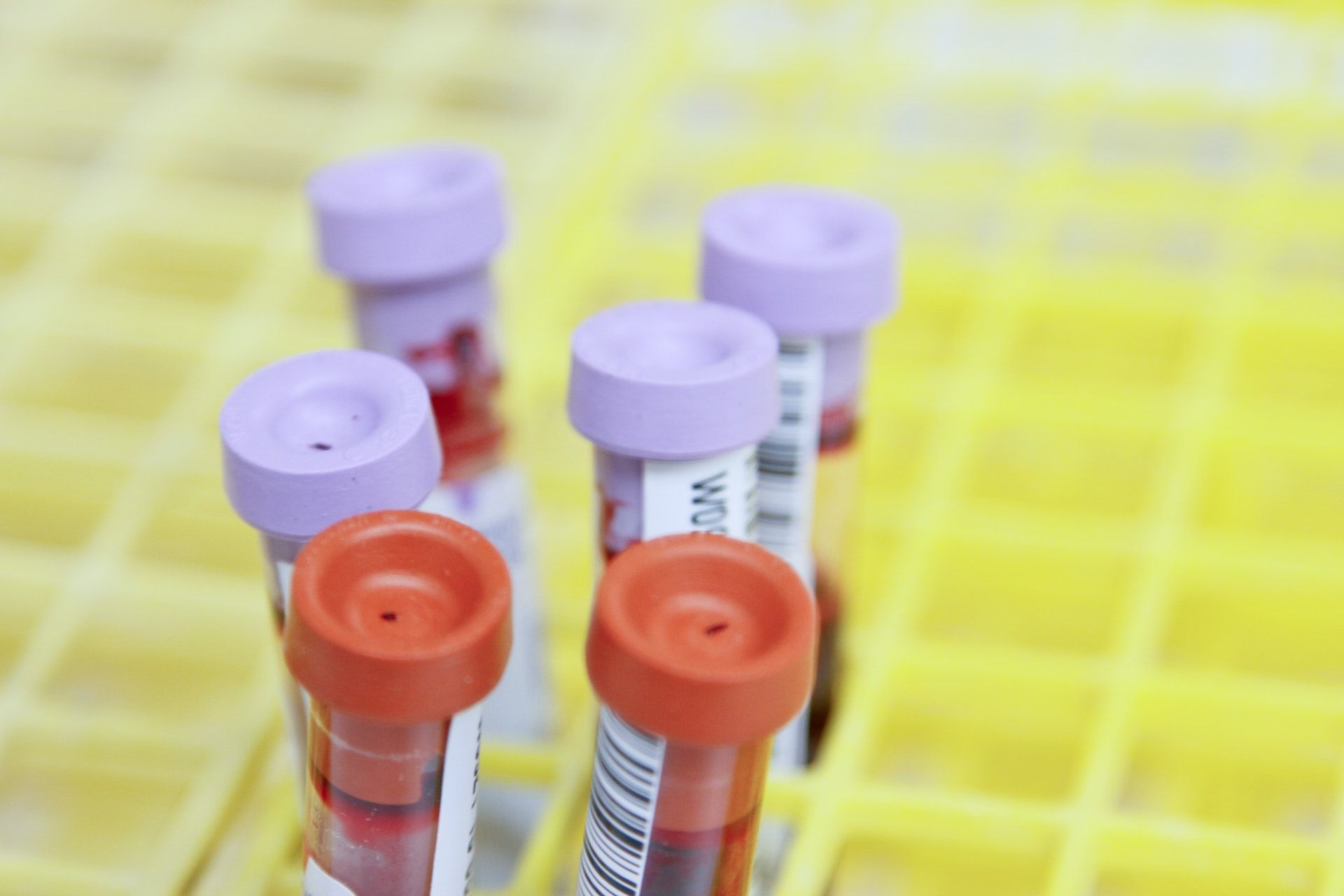
Blood
Once the blood sample is collected, it should be properly stored and prepared for shipping. The first thing to consider is the type of tube that the blood will be stored in. There are various types of tubes, including: sodium citrate tube, heparin tube, gel separator tube and EDTA tubes among others. Before deciding the type of tube to use, you should consider the tube requirements for the lab that will process the sample. In the case of 3billion, EDTA tubes are the required tubes for whole blood samples, as our lab is optimized for EDTA whole blood processing. Proper refrigeration of the blood after extraction and during shipment is also essential, so try to maintain the blood at +2°C to +8°C to arrive within 7 days to the lab destination after extraction. Whole blood takes proper coordination and planning, which may be difficult if located remotely or looking to coordinate several patients at once.
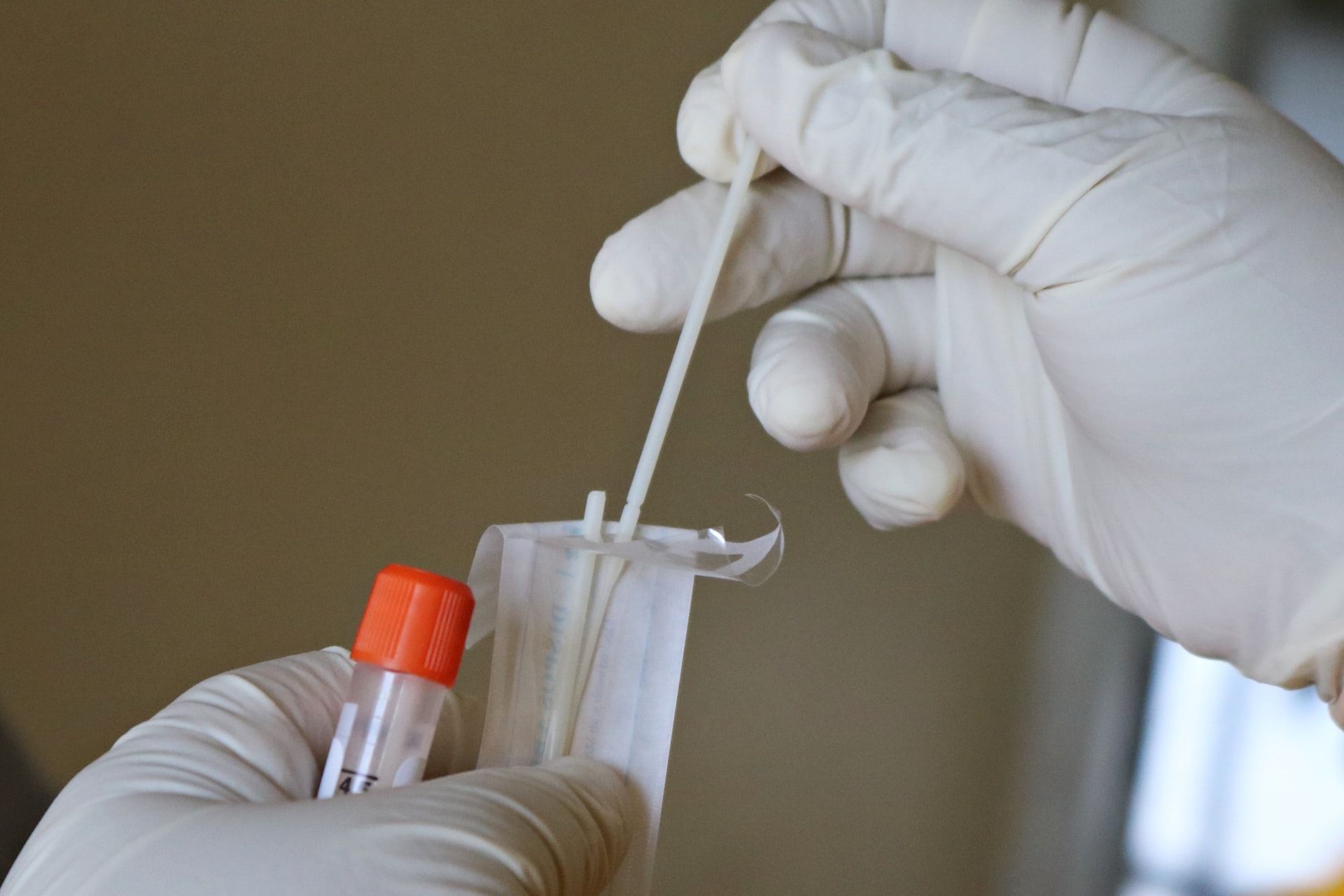
Buccal kits
Buccal kits provide the convenience of simpler storage and shipment. Once the buccal swabbing is complete, the swab needs to only be placed in the tube that contains the buffer solution; the buffer solution is designed to stabilize the DNA on the swabs. The buccal kit can be stored longer and can arrive at the 3billion lab up to 1 month after sample collection. Ideally, samples should be sent within 1 week after collection; even though the sample is in the buffer solution. The longer it is stored before DNA extraction, the greater the risk for the growth of bacteria that is commonly found in the oral cavity (see quality section).
Both
Assure that both types of samples are properly packaged to prevent any damage or leakage. If the blood in the EDTA tubes or the buffer solution for the swabs leak, contamination of other samples prevents the samples from being processed. Shipping regulations should also be considered for either sample. Limitations may exist on the type of biological samples that may be shipped and/or received. Some countries may require special permits on the type of samples that may be exported/imported by the exporter/importer; so be sure to investigate what your local regulations are before deciding on your sample collection protocol. 3billion has no issues receiving either kind of samples.
DNA extraction and quality
The final step is for the DNA to be extracted so that sequencing can be properly performed. This could be considered the most important step since proper sequencing will depend on the quality of the DNA.
It is widely accepted that the quality and yield of DNA from blood is very good, and is considered the gold standard.5 It is not to say that DNA extracted from buccal samples is poor or ineffective for NGS. Although blood is considered the gold standard for DNA extraction, buccal swabs also produce sufficient yield and quality6, 7; including our own internal validation results for the buccal kits that we use. A concordance evaluation between both blood and our buccal kits showed that our buccal kits were an effective method of extracting useful DNA, showing a very high concordance rate of more than 99.99%. When proper buccal swab collection techniques are followed, the quality and yield difference between the two types of samples does not need to be a deciding factor. Both provide adequate DNA to help identify the causative mutation of a disease leading to diagnosis.
Contamination of the sample is also a factor that can affect the quality of the DNA. As mentioned previously, when gathering buccal samples, patients should not consume any water or food before sample collection because it may affect the sample collection. It may result in bacterial contamination. Streptococcus parasanguinis is the most abundant microorganism bacteria in the mouth that can result in DNA contamination, and other oral diseases can also affect DNA quality3. These are factors that can not be controlled. On the other hand, blood contamination is less likely, and in a controlled environment can be avoided.
The effect of bacteria can be demonstrated in our own internal studies that looked at the mappable reads by both buccal swab and blood, showing a difference between the two (figure 1). The difference can be attributed to factors such as bacteria that are present in buccal samples that can not be avoided, and the difference may appear significant, affecting successful sequencing, thus analysis. However, our tests have demonstrated that for proper sequencing to take place the minimum initial mappable reads percentage should be 99.0%.
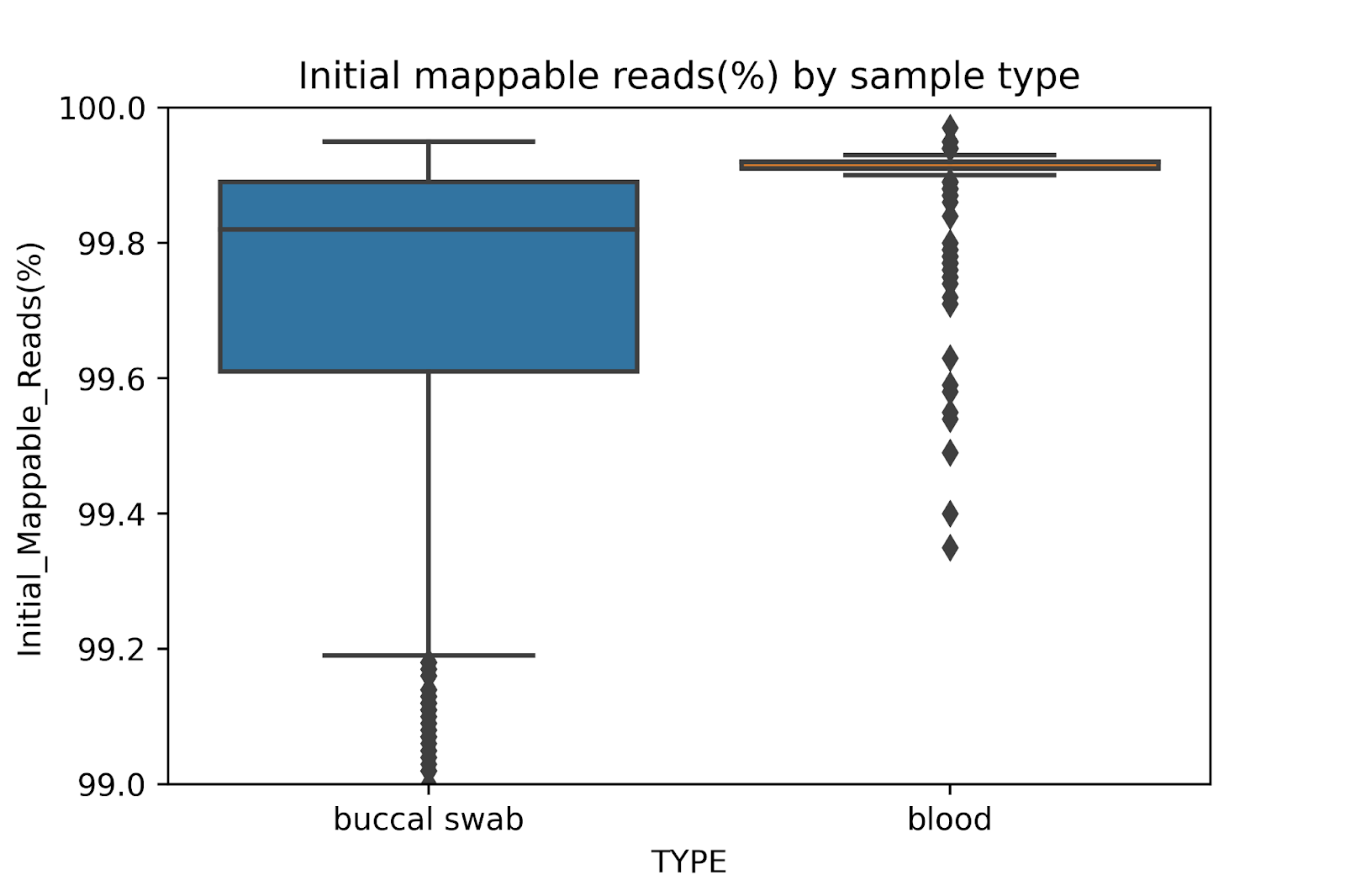
What do you decide?
Both blood and buccal swab samples are acceptable samples to extract DNA. It is recommended to provide blood samples when possible, as it is the gold standard for quality and yield of DNA. Of course, the decision will need to be made by the attending doctor; there can be certain circumstances when drawing blood is not ideal. 80% of patients affected by a rare genetic disease are children. It may prove to be a difficult task to properly and safely draw blood from young children, or they may be afraid of needles. The patient may also have undergone hemodialysis or received allogeneic hematopoietic stem cell transplants making blood drawing difficult; in these situations the use of buccal swabs is recommended. So make sure to take all factors into consideration when selecting between blood or buccal samples.
References
- Curtis C, Hereward J, From the Crime Scene to the Courtroom: the Journey of a DNA Sample. The Conversation (2017).
- Dhingra, Neelam et al., Who Guidelines on Drawing Blood: Best Practices in Phlebotomy. WHO Document Production Services, Switzerland (2010).
- Mahfuz, Istiak; Cheng, Wei; and White, Stefan J. Identification of Streptococcus Parasanguinis DNA Contamination in Human Buccal DNA Samples. BMC Research Notes 6, 481 (2013).
- Freeman B, Powell J, Ball D, Hill L, Craig I, Plomin R, DNA by Mail: An Inexpensive and Noninvasive Method for Collecting DNA Samples from Widely Dispersed Populations. Behav Genet, 27 (3): 251-257 (1997).
- Hu, Yueshan, et al., Genotyping Performance Between Saliva and Blood-derived Genomic DNAs on the DMET Array: A Comparison. PLoS One 7.3 (2012).
- Saab, Yolande B., Wissam Kabbara, Christiane Chbib, and Paul Richard Gard. Buccal Cell DNA Extraction: Yield, Purity, and Cost: A Comparison of Two Methods. Genetic testing 11 (4) 413-416 (2007).
- Woo, Jessica G., Guangyun Sun, Mary Haverbusch, Subbarao Indugula, Lisa J. Martin, Joseph P. Broderick, Ranjan Deka, and Daniel Woo. Quality assessment of buccal versus blood genomic DNA using the Affymetrix 500 K GeneChip. BMC Genetics 8 (79), 1-5 (2007).
















